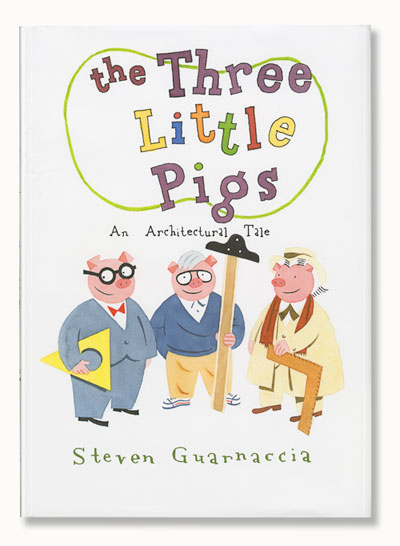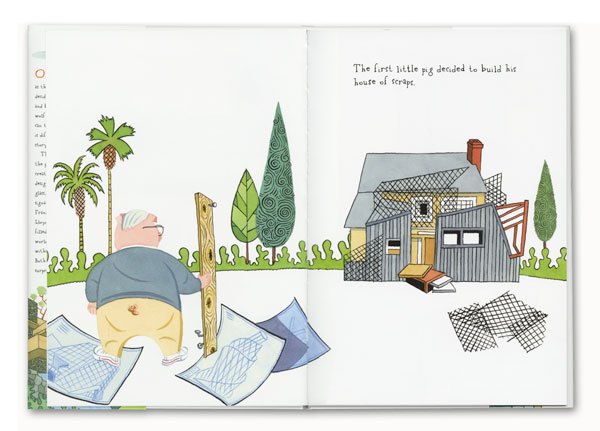on Starchitecture

Scott Carlson, Buildings & Grounds, The Chronicle of Higher Education, 4 June 2010:
This isn’t exactly college-level reading, but anyone who has dealt with a starchitecture project might appreciate this: We recently received a version of The Three Little Pigs, but the pigs look quite a bit like some of the most famous architects of the past 100 years—Frank Gehry, Philip Johnson, and Frank Lloyd Wright.
There is a certain genius to this reimagining. After all, the original children’s tale was grounded in the lessons of choosing good materials and planning well. Modern architects haven’t always followed those ethics, resulting in nightmares for various building owners (and entertaining stories for people who love to hate starchitects). If Frank Gehry’s buildings couldn’t stand up to Boston winters, then how would they survive the Big Bad Wolf (especially one wolf dressed in a black leather jacket, buzzing around on a Voxan GTV 1200)? Not well, it turns out. You see, “the first little pig decided to build his house of scraps,” the book tells us. And you can guess what happened when the gusty wolf showed up. Even worse, the second made his a glass house. (Fun fact: Flying debris—particularly glass—is one of the main causes of injury and death in a windstorm.)

“But the third little pig decided to build his house of stone and concrete,” the book says, showing the pig with blueprints for Fallingwater.
From here, the story proceeds like a conventional three-pigs tale—on behalf of his brothers, the third pig plays various tricks on the wolf, until he finally lures him down the chimney. (No fiery death here; the scorched wolf runs for his GTV 1200 and is never seen again.) Fun story, but there are a couple of problems with this retelling: First of all, Frank Lloyd Wright was a famously self-absorbed man and a hypercompetitive architect. Yet, the Wright pig risks his curly tail to help his architect-brothers. Second, anyone who follows architecture knows that Wright’s buildings have had their problems—Fallingwater, in particular. Maybe the wolf should have just waited around for the house to fall down on its own.

A delightful book - perhaps a must-have in an architect's library.



0 Comments:
Post a Comment
<< Home